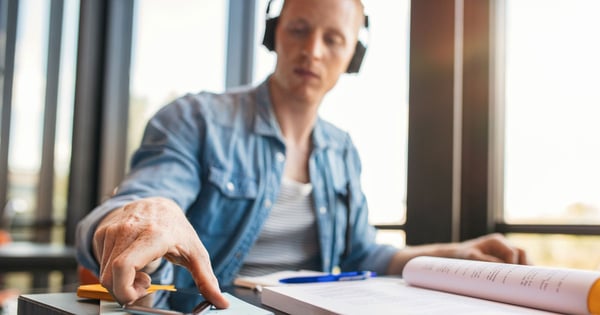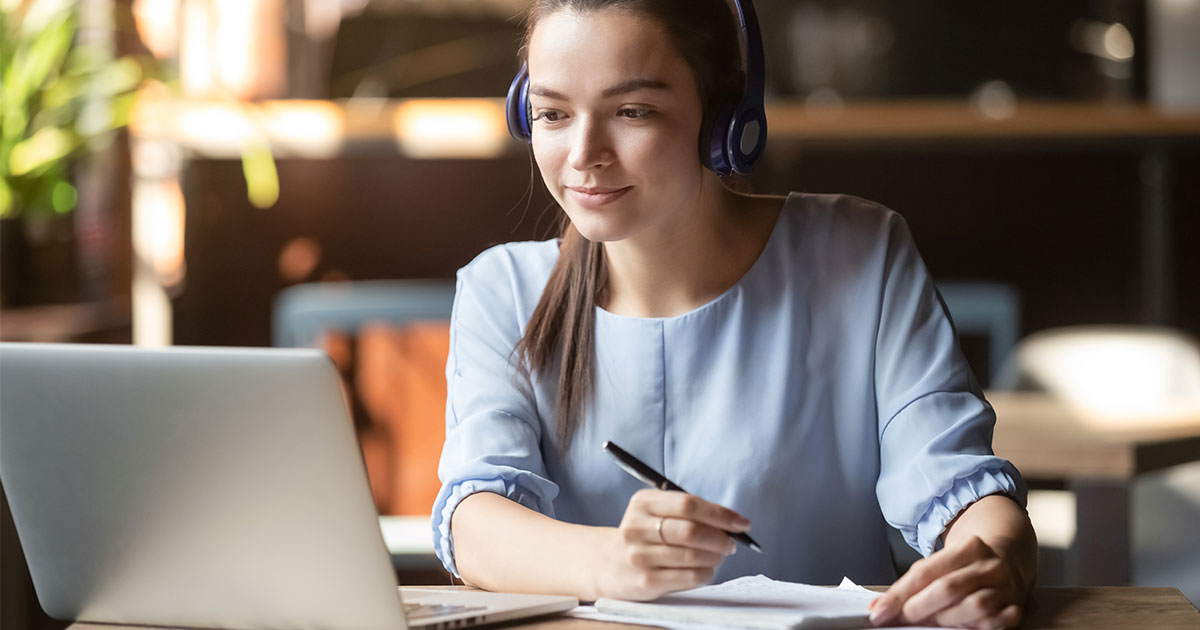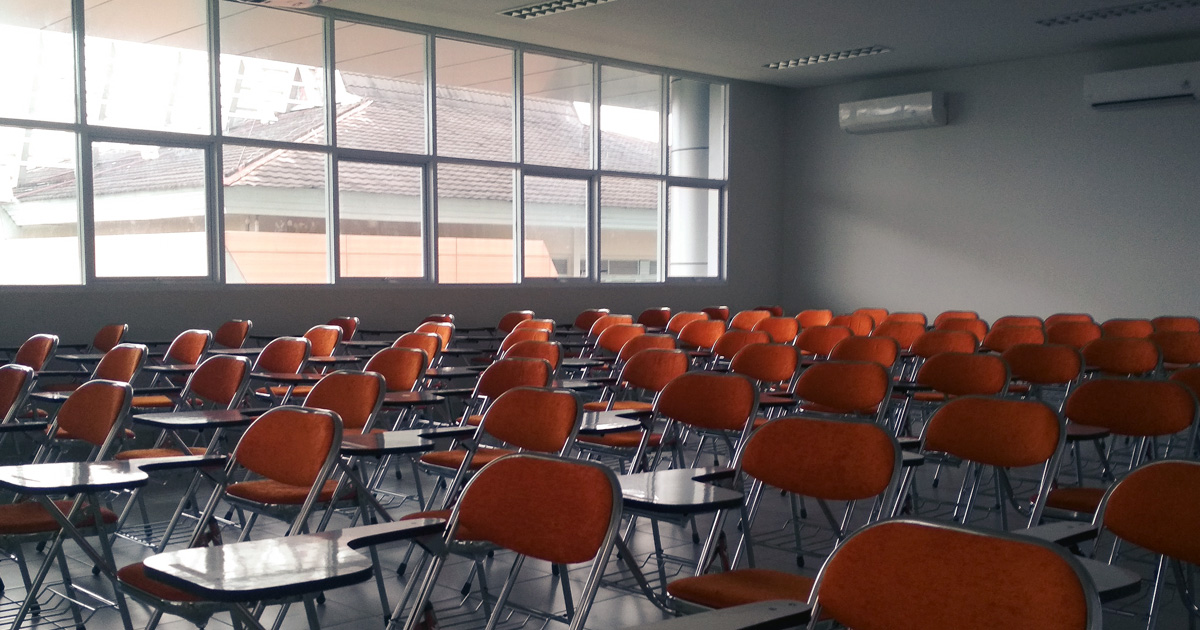Strategies for Successful Distance Learning
Distance learning connects students to learning resources remotely, offering flexibility and accessibility. This mode of education has evolved significantly, incorporating live and recorded video sessions, interactive elements, and various digital tools. Whether students are in primary school, university, or professional training, effective strategies can enhance their online learning experience. Below, we outline key distance learning strategies and best practices to ensure success.
Table of contents
- The shift to live & recorded online classrooms
- Essential distance learning strategies
- Key principles of effective online learning
- Conclusion
The shift to live & recorded online classrooms
Most modern distance learning approaches rely heavily on live video conferencing and recorded sessions. Digital Samba’s high-quality, secure video conferencing solutions make these sessions seamless and interactive, improving student engagement and participation. Whether conducting one-on-one lessons or group discussions, having a structured approach to online teaching is essential.
Live sessions allow for real-time interaction, enabling students to ask questions and receive immediate feedback. This fosters an engaging learning environment that closely resembles traditional classrooms. Features like breakout rooms, live polls, and Q&A sessions help enhance participation and keep students actively involved in lessons.
Recorded sessions, on the other hand, offer flexibility and accessibility. Students can revisit recorded lectures at their convenience, ensuring they do not miss critical information due to connectivity issues or scheduling conflicts. A 2023 study by the Open University found that students who had access to recorded lectures showed a 25% improvement in knowledge retention compared to those who only attended live classes. Additionally, recorded content can serve as a valuable resource for revision, allowing students to review complex topics multiple times.
Furthermore, hybrid models that combine live and recorded sessions offer an optimal balance, catering to different learning styles. This approach accommodates students who thrive in interactive environments while also supporting those who prefer self-paced learning. Institutions and educators implementing these strategies have reported higher engagement and course completion rates.
Essential distance learning strategies
Successfully implementing distance learning requires careful planning, flexibility, and the right tools. Educators need to adapt their teaching styles to suit the online environment while ensuring student engagement, motivation, and comprehension remain high. Below are some of the most effective strategies to help students thrive in a remote learning setting.

1. Exercise more patience than you would In person
Remote learning introduces unique challenges, such as internet connectivity issues, background distractions, and reduced engagement. A 2024 NEA survey revealed that 90% of educators support policies prohibiting cellphone use during instructional time, highlighting the significant impact of digital devices on student focus. Therefore, teachers must exercise additional patience and flexibility to accommodate these challenges. Providing clear instructions, checking in with students frequently, and allowing extra time for responses can create a more inclusive learning environment.
2. Leverage internet culture for engagement
The internet has its own culture, and integrating elements like memes, GIFs, and viral trends can make online lessons more relatable. Using interactive tools such as Kahoot or Mentimeter can further enhance engagement by gamifying learning experiences.
3. Reinforce key concepts multiple times
Online learning requires repetition and reinforcement of key concepts. Use multiple approaches, such as videos, quizzes, and discussions, to help students absorb information effectively. Providing supplementary materials, such as reading lists and external resources, enhances retention. Additionally, summarising key points at the end of each lesson and encouraging peer discussions can deepen understanding.
4. Be aware of privacy & security concerns
Teachers should assume they are being recorded and that parents may be watching lessons. This underscores the importance of maintaining professionalism and using a secure video conferencing platform like Digital Samba, which ensures GDPR-compliant, encrypted communication. Educators should also establish clear guidelines on data privacy and acceptable online behaviour to foster a safe learning environment.
5. Establish backup communication channels
Technical difficulties are inevitable. Having backup communication methods, such as email, a learning management system (LMS), or instant messaging, ensures that students stay informed even if a live session is interrupted. Creating a shared digital document or forum for announcements can further streamline communication.
6. Schedule one-on-one support
Students benefit from personalised attention. Dedicating time for one-on-one sessions allows teachers to address individual challenges and provide targeted support. Research by the Journal of Online Learning (2023) found that students receiving one-on-one virtual support were 40% more likely to complete their courses successfully. Encouraging students to schedule regular check-ins fosters a more supportive learning environment.
7. Use visual aids and interactive tools
Visual content keeps students engaged. Screen sharing, infographics, and video demonstrations help maintain attention and improve comprehension. Teachers can also use AI-powered tools, such as a photo generator, to create customised educational visuals. Integrating virtual whiteboards like Miro or Jamboard can encourage collaboration and participation.
8. Record sessions for review & improvement
Recording lessons allows students to revisit complex topics at their own pace. Additionally, teachers can review their teaching methods for self-improvement. A study found that students who rewatched recorded lectures scored 25% higher on assessments than those who only attended live classes. Providing time-stamped summaries or key takeaways can further enhance the usefulness of recorded sessions.
9. Provide external learning resources
Encourage independent learning by sharing reference materials, such as online articles, research papers, and recorded lectures. This approach aligns with the ‘flipped classroom’ model, where students engage with content before class discussions. Offering curated reading lists and interactive simulations can deepen students’ understanding of the subject matter.
10. Maintain focus and structure
Online classrooms can easily become chaotic. Establishing clear guidelines, structured lesson plans, and interactive engagement rules helps keep classes productive. Setting a consistent schedule, minimising distractions, and using agenda-setting tools like Trello or Notion can improve time management and lesson flow.
Ensure effective outcomes in virtual education—get details on Digital Samba as a practical, secure alternative to Lessonspace.
Key principles of effective online learning
A strong foundation in online education relies on core principles that support both educators and students in achieving their learning objectives. Two key aspects that play a vital role in the success of distance learning are accessibility and self-discipline. Ensuring that students have the necessary tools to access learning materials and developing habits that promote independent learning are critical for maintaining engagement and knowledge retention.
1. Accessibility in distance learning
Ensuring access to learning materials and educators is crucial for effective distance learning. Online students need a stable internet connection, access to course content, and responsive instructors. Providing downloadable resources and offline access options ensures inclusivity, allowing students in different time zones or with limited connectivity to participate fully. Schools and institutions should consider implementing cloud-based solutions and mobile-friendly platforms to cater to a diverse student base.
2. Encouraging self-discipline
Unlike traditional classrooms, online learning requires students to develop self-discipline and time management skills. Without the physical presence of a teacher, students must take greater responsibility for their education. Establishing routines, setting deadlines, and fostering accountability through self-assessments, study groups, and progress tracking can improve course completion rates. Teachers can support this by incorporating goal-setting exercises and encouraging the use of productivity tools like digital planners and focus timers.
FAQs
Successful online learning strategies include maintaining a structured schedule, engaging with interactive materials, using secure video conferencing, and setting personal study goals.
Using visual aids, interactive polls, quizzes, and internet culture elements (such as memes and videos) can make virtual lessons more engaging.
Common challenges include internet connectivity issues, lack of motivation, distractions at home, and difficulty in maintaining student engagement.
Establish a daily schedule, create a dedicated study space, minimise distractions, and take regular breaks to maintain focus and productivity.
Key tools include a reliable video conferencing platform like Digital Samba, a learning management system (LMS), digital whiteboards, and file-sharing applications.
Digital Samba offers a robust, secure video conferencing API and SDK that integrates seamlessly with educational platforms, enabling high-quality virtual classrooms with enhanced privacy and engagement features.
Conclusion
Distance learning is here to stay, and implementing best practices is key to success. As education continues to evolve, leveraging digital tools and strategies that enhance engagement, accessibility, and self-discipline will be crucial for students and educators alike. Institutions that adopt secure, high-quality platforms for video conferencing and interactive learning will provide a more effective and inclusive remote education experience.
By combining live and recorded sessions, fostering interactive participation, and ensuring reliable access to educational resources, students can overcome the common challenges of online learning. Educators, in turn, must remain flexible and proactive in adapting their teaching methodologies to keep learners motivated and engaged.
Investing in the right technology, such as Digital Samba’s robust video conferencing API and SDK, enables seamless integration with educational platforms, ensuring privacy, high-quality video, and enhanced collaboration. Whether you are an institution looking to scale your distance learning capabilities or an educator seeking better ways to connect with students, Digital Samba provides the tools needed for a successful virtual classroom.
To learn more about how Digital Samba can help enhance your distance learning experience, explore our video conferencing API and SDK. For personalised guidance, contact our sales team.
Photos by Jacob Lund from Noun Project
Share this
You May Also Like
These Related Stories

Virtual Classroom Education: How Distance Learning Works
.jpeg)
What is an LMS? Explore Types, Features & Benefits

